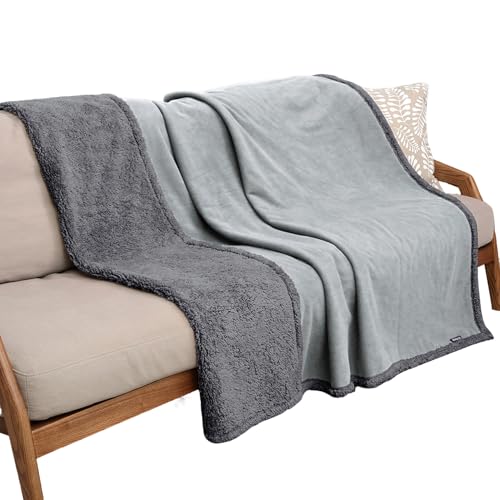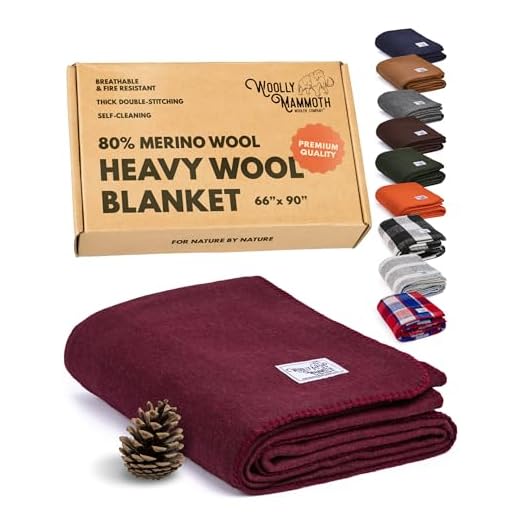








When the mercury dips below -5°C, it’s advisable to reconsider those outdoor excursions with your furry friend. At this temperature, the risk of frostbite on exposed skin increases significantly, particularly on the paws, ears, and tail. It’s essential to be vigilant, as smaller breeds and those with short coats are more susceptible to the chill.
During winter outings, it’s wise to keep walks brief and monitor your pet for signs of discomfort. If your companion starts lifting their paws or shivering, it’s time to head back indoors. Consider investing in a quality canine coat or booties if you plan to be outside for longer periods.
Moreover, be aware that even on days when the temperature appears manageable, wind chill can create a harsher environment. Always check the weather conditions to ensure your four-legged friend remains safe and warm. Remember, keeping your pet’s comfort in mind is paramount during the colder months.
Determining Safe Temperatures for Outdoor Adventures
For most breeds, anything below 0°C poses a risk. Smaller or short-haired pups are particularly vulnerable; they may start shivering at temperatures around 7°C. If it feels uncomfortable for you, chances are it’s chilly for them too.
Watch for signs of distress, like lifting paws or reluctance to move. If your companion starts showing these behaviours, it’s time to head back inside. Consider using a protective coat or booties for added warmth during outings.
Staying active indoors can also be beneficial. Engaging them with games or training sessions can substitute for outdoor time. It’s essential to keep their spirits high while ensuring they remain safe and comfortable.
While maintaining a clean home environment during winter, you might find yourself needing the best vacuum cleaner for wooden floors; this can help manage the mess brought in from outdoor excursions.
Always prioritise their comfort and well-being. Tailoring outdoor time to suit their needs will keep your furry friend happy and healthy throughout the colder months.
Understanding the Risks of Cold Weather for Dogs
Always keep an eye on the signs of discomfort. If your furry friend starts shivering, lifting their paws off the ground, or whining, it’s time to head back home. Hypothermia and frostbite are real threats in freezing temperatures, especially for smaller breeds or those with short coats.
Be aware of the breed’s characteristics. Some canines are better suited for harsh conditions than others. For example, Huskies and Malamutes thrive in chilly environments, while Chihuahuas and Dachshunds may struggle. A quick reference table is provided below to help you gauge the suitability of various breeds:
| Breed | Cold Weather Tolerance |
|---|---|
| Husky | Excellent |
| Malamute | Excellent |
| Beagle | Good |
| Dachshund | Poor |
| Chihuahua | Poor |
Monitor paws for ice buildup and irritation. Regularly check between the toes for signs of snowballs forming or cuts from sharp ice. Booties can be a great investment for sensitive paws. If your pal resists wearing them, take time to acclimatise them slowly.
Watch for behavioural changes. If they seem lethargic or reluctant to explore, it’s a sign that conditions may be too harsh. Stay in touch with your vet for tailored advice based on your pet’s specific needs. For those with picky eaters, you might wonder will a food fussy dog eventually eat? Keeping their energy levels up with proper nutrition is crucial in maintaining body heat.
In severe weather, consider indoor activities. Engaging in playtime at home can keep spirits high and help expend energy without risking exposure to the elements. Always prioritise their wellbeing by making informed decisions based on the conditions outside.
Signs That Your Dog is Too Cold
Pay close attention to these indicators when assessing whether your furry friend is experiencing discomfort due to low temperatures:
- Shivering: A clear sign of being chilly. If you notice your pet shaking, it’s time to head inside.
- Whining or Barking: Vocalisations can indicate distress. If your canine companion is unusually vocal, they may be signalling discomfort.
- Reluctance to Move: If your pooch suddenly becomes hesitant to continue, it could be a sign that they’re feeling the effects of the weather.
- Seeking Shelter: Looking for a warm spot or trying to hide can suggest that they’re struggling with the external conditions.
- Paw Lifting: Constantly lifting paws off the ground can indicate that the surface is too chilly for their sensitive pads.
Monitor these behaviours closely. If you notice any of them, it’s best to cut your outing short and provide a warm environment for your pet.
Additionally, consider the breed and age of your furry friend. Some breeds, especially those with shorter coats, may be more sensitive to lower temperatures than others. Older dogs and those with health issues may also require extra care during frigid spells.
Always trust your instincts. If you feel it’s uncomfortable for you, it’s likely the same for your loyal companion.
Recommended Temperature Guidelines for Dog Outings
For optimum enjoyment and safety, keep outings for your canine companion within the temperature range of 7°C to 20°C. Below this threshold, particularly as it approaches 0°C, the risks increase significantly. It’s essential to monitor the weather and assess conditions before venturing outside.
Additional Considerations
Wind chill can significantly affect how temperatures feel. A brisk breeze can lower the apparent temperature, leading to discomfort or health risks. If the wind chill makes it feel like it’s below 5°C, consider shortening the duration of your adventure.
Activity Level Matters
Engaging in vigorous play may allow for a slightly broader temperature range. However, if your furry friend is older, smaller, or has a thin coat, be extra cautious. Always have a quick exit plan to return home if the environment becomes uncomfortable.
Preparing Your Canine Companion for Winter Outings
Dress them appropriately. Invest in a quality coat that fits snugly without restricting movement. A well-fitted sweater can also provide extra warmth, especially for smaller breeds or those with short fur. Don’t forget booties to protect their paws from ice and salt; their pads can get sore or injured from harsh surfaces.
Gradual Acclimatization
Introduce them slowly to lower temperatures. Start with brief excursions, gradually extending the duration as they adapt. This helps them build tolerance without overwhelming their system.
Hydration and Nutrition
Ensure ample hydration before heading outside. Cold air can be dehydrating, and a well-nourished pet is better equipped to handle the elements. Consider adding warm, nutritious meals to their diet during chilly months.
- Check their weight; extra insulation can be beneficial, but avoid overfeeding.
- Monitor their energy levels. Increased activity indoors can help keep them fit.
Keep an eye on paw care. After each outing, inspect their paws for cracks or ice buildup. A good paw balm can offer protection and moisture.
- Use a damp cloth to clean off any salt or chemicals after each excursion.
- Consider paw wax for added protection during walks.
Lastly, observe their behaviour. If they seem reluctant or exhibit signs of discomfort, it’s best to return indoors. Their wellbeing is paramount.
Protective Gear for Dogs in Low Temperatures
Investing in a quality coat can make a significant difference for your furry companion during frigid days. Look for options that offer insulation and are made of waterproof materials to keep them warm and dry. A snug fit is essential, as it prevents cold air from seeping in while allowing freedom of movement.
Booties are another great addition to your pet’s winter wardrobe. They protect paws from icy surfaces and harmful salt or chemicals often used on roads and sidewalks. Ensure the booties fit well and are comfortable enough for your pet to walk in without hesitation. Gradual introduction to wearing them can help ease any initial resistance.
Consider a scarf or sweater for added warmth, particularly for breeds with shorter hair or lower body fat. These accessories can help retain heat and make outdoor adventures more enjoyable. Just ensure they are not too tight, allowing your pet to move freely without restriction.
Reflective gear can enhance visibility in low light conditions, which is especially important during the winter months when daylight hours are shorter. Collars, leashes, and harnesses with reflective materials or lights make it easier for you and others to spot your companion while out and about.
Lastly, always check your pet’s paws after outdoor excursions. Snow and ice can accumulate between their toes, leading to discomfort. Wipe their paws clean and consider applying a paw balm to keep them moisturised and protected from harsh conditions.
Alternative Activities for Cold Days
Engaging in indoor games can be a fantastic way to spend time with your furry friend. I’ve found that interactive toys, like puzzle feeders, keep my canine entertained while stimulating their mind. They love working for their treats, and it burns energy without requiring a trip outside.
Consider setting up an obstacle course within your home. Use cushions, chairs, and blankets to create fun challenges. My pup adores navigating the makeshift tunnels and jumping over cushions. It’s a great bonding experience and helps with agility training.
Another excellent option is to schedule playdates with fellow pet owners. Inviting a friend over with their dog can lead to hours of fun and socialisation. Watching them romp around the living room always brings a smile to my face.
Training sessions serve a dual purpose: they reinforce good behaviour and provide mental stimulation. I often dedicate time to teach my dog new tricks or reinforce existing commands. This not only reinforces our bond but also keeps their mind sharp.
Don’t overlook the joy of snuggling up with a good book or movie. I often find myself relaxing on the sofa with my pup curled up beside me. It’s the perfect way to enjoy each other’s company when the weather isn’t favourable.
If you have access to a safe indoor space, consider using it for some gentle exercise. Activities like fetch or tug-of-war can be modified to fit within your living room or hallway. Just be mindful of breakables!
Finally, explore the idea of DIY doggie treats. I’ve spent afternoons baking homemade biscuits, which my pooch absolutely loves. It’s a delightful way to spend time together, and I know exactly what goes into their snacks.








